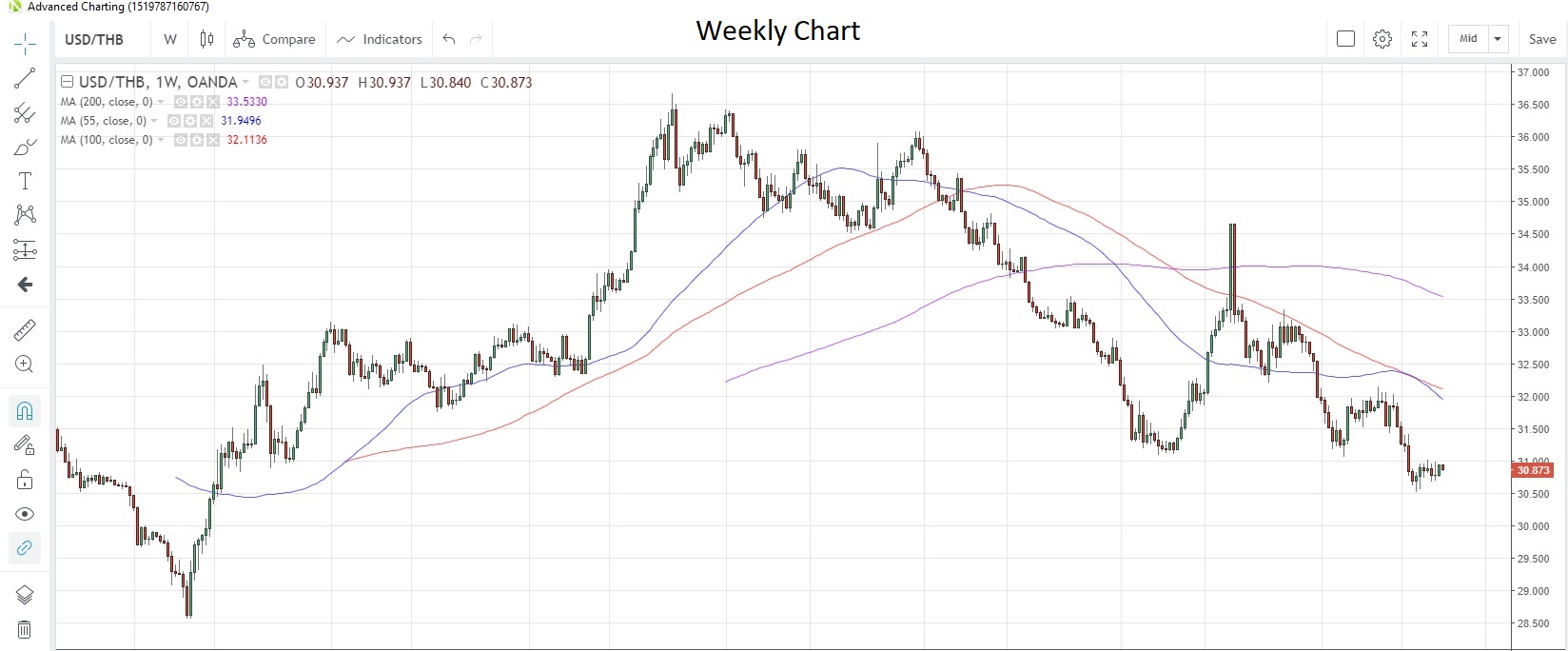Equities move higher
Friday’s positive mood on Wall Street continued in morning trade in Asia, with US indices gaining between 0.49% and 0.59%. The outperformer of the day was the HongKong33 index, which rallied 1.8% after the ongoing weekend anti-government protests, now in its 11th week, passed off peacefully for the first time in a number of weeks.
Currencies were a little more lackluster, with no discernible risk-on trading evident. EUR/USD was up 0.02% by lunchtime while AUD/USD slid 0.05%. GBP/USD looks set for its third daily gain in a row, the first time since early-July, after posting the first weekly gains in five weeks last week.
GBP/USD Weekly Chart

Thailand’s growth slows in Q2
In what is likely to be a recurring theme in Asia, the Thai economy slowed to +0.6% q/q in the second quarter, down from +1.0% in Q1 and below economists’ estimates of a 0.7% expansion. No doubt the US-China trade frictions and a slowing Chinese economy contributed to the slower growth and this theme is likely to repeat across most Asia export-focused economies.
The slower second-quarter numbers led the Planning Agency to lower its 2019 GDP growth forecast to 2.7%-3.2% from 3.3%-3.8% while slicing exports growth to -1.2% from +2.2%.
The Thai baht has been the best-performing Asian currency against the US dollar this year, rising more than 5% since the start of the year. Those gains have caused some concerns and complaints from the tourism sector and the authorities scaled-down tourism receipts for this year to 2.04 trillion baht from 2.21 trillion baht. USD/THB is now at 30.865, just above last month’s low of 30.510, which was the lowest since June 2013. The Agency sees USD/THB in a 30.7-31.7 range.
USD/THB Weekly Chart

Better Malaysia growth forecast
In contrast to the rest of the region, rating's agency Fitch upgraded its 2019 growth forecast for Malaysia to 4.6% from 4.2% at a prior estimate, stating that it forecasts imports and investment increasing while exports are likely to be a drag in the second half of this year.
Jackson Hole looms
It’s a slow start to the week on the data front, with most eyes already on the Fed’s Jackson Hole Symposium which starts on Thursday. Today we only have Euro-zone current account data for June and eurozone consumer prices for July. CPI is seen falling 0.4% m/m, which would be the lowest reading in six months, and could give the ECB some encouragement in its easing considerations.
